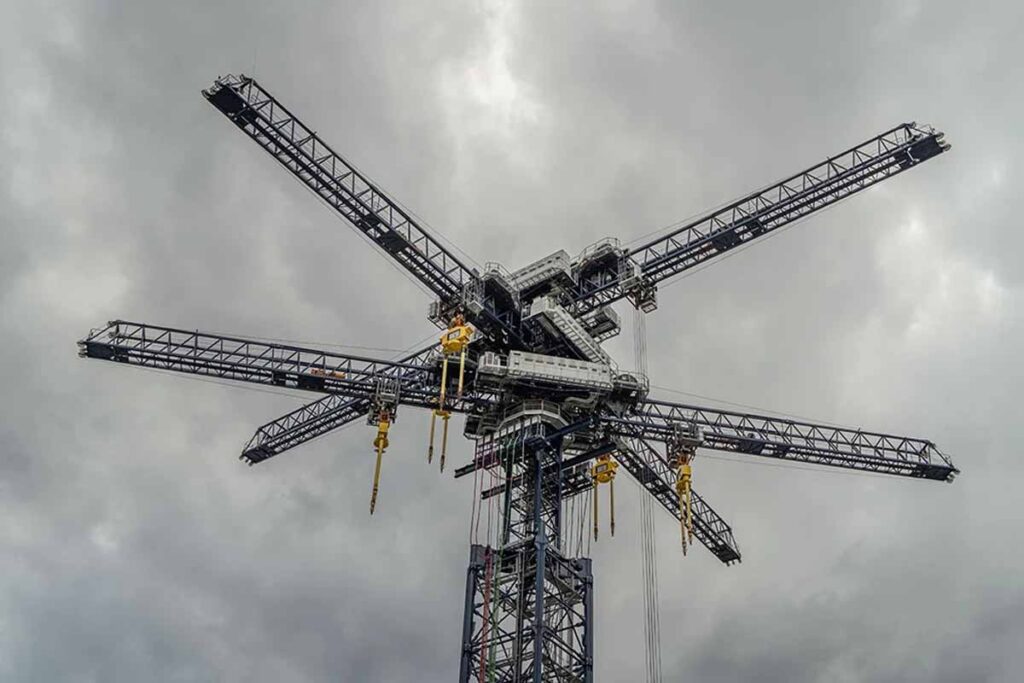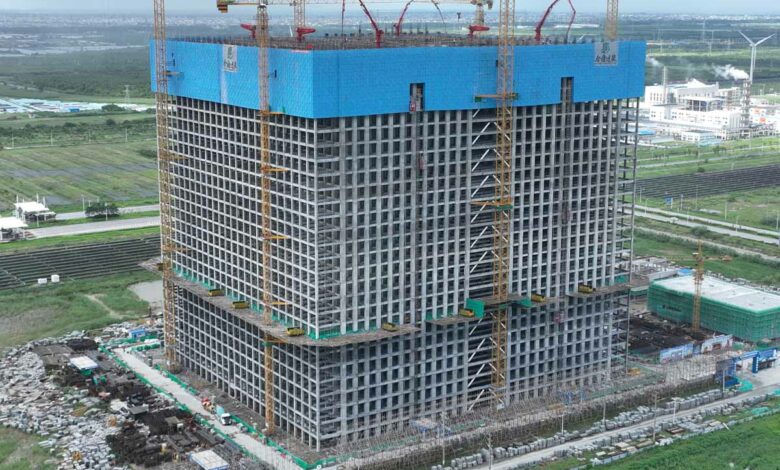As the lights of Shanghai shine in the night, a giant stands on the outskirts of the city. It is not a skyscraper, nor a monument, but a battery. A gravity battery of colossal dimensions, ready to revolutionize the way we imagine the future of energy. This structure, which could easily be mistaken for a modern skyscraper, is called the Energy Vault and represents the promise of a greener and more sustainable tomorrow. But how can a “building” do all this? Let's take a look.
The era of gravity batteries
For those who still don't know exactly what a "gravity" battery like the one from Energy Vault is, let's try to explain it in two words. Gravity batteries exploit the principle of gravitational potential energy.
When there is an excess of electrical energy, it is used to lift massive weights, such as concrete blocks, via cranes or lifting systems. This process converts electrical energy into potential energy. When the grid needs energy, these weights are released. As they fall, they turn on generators that produce electricity, transforming the accumulated potential energy into electrical energy.
Gravity-fed batteries are environmentally friendly, potentially economical and long-lasting, and can be installed in various contexts, making them a flexible and sustainable energy solution.
Energy Vault, a nice discovery
In the vast landscape of energy storage solutions, diversification has long been an unattainable dream. Until now, the options were limited: hydraulic storage, traditional batteries or storage using hydrogen from renewables (if I write "green" the controversial comments begin on our social channels). And now “giants” like energy vault.
The Energy Vault proposal is not only innovative, but promises to be more sustainable, scalable and even less expensive. Born from the collaboration with the Chinese giants Atlas Renewables e China Tianying, the first commercial EVx system is preparing to go into action, promising to revolutionize local energy distribution by the end of the year.
From idea to concrete reality
It all started in June, when the commissioning phases began. Imagine teams of engineers and technicians at work, installing advanced electronic systems and “belt” lifting mechanisms. And the location? Right next to a wind farm, connected to China's national electricity grid.
The pilot version, the EV1 Tower, had already demonstrated its effectiveness in Switzerland, reaching an efficiency of over 75%. With the information gathered in the tests, Energy Vault was able to refine the design and is now aiming for even greater efficiency, above 80%.

Energy Vault, big ambitions
Robert Piconi, CEO of Energy Vault, is enthusiastic: the company has plans similar to the one in Shanghai will see the light of day across China, supporting the state's ambitious goal of “zero-carbon parks.” The future is a very tall building, with the sky as the only limit.


